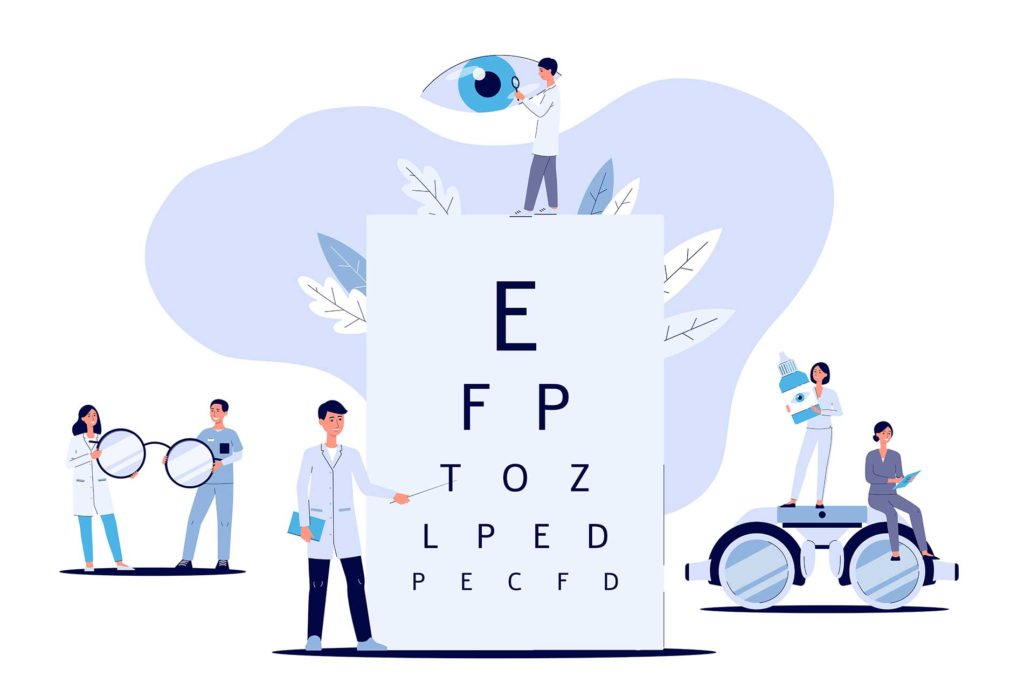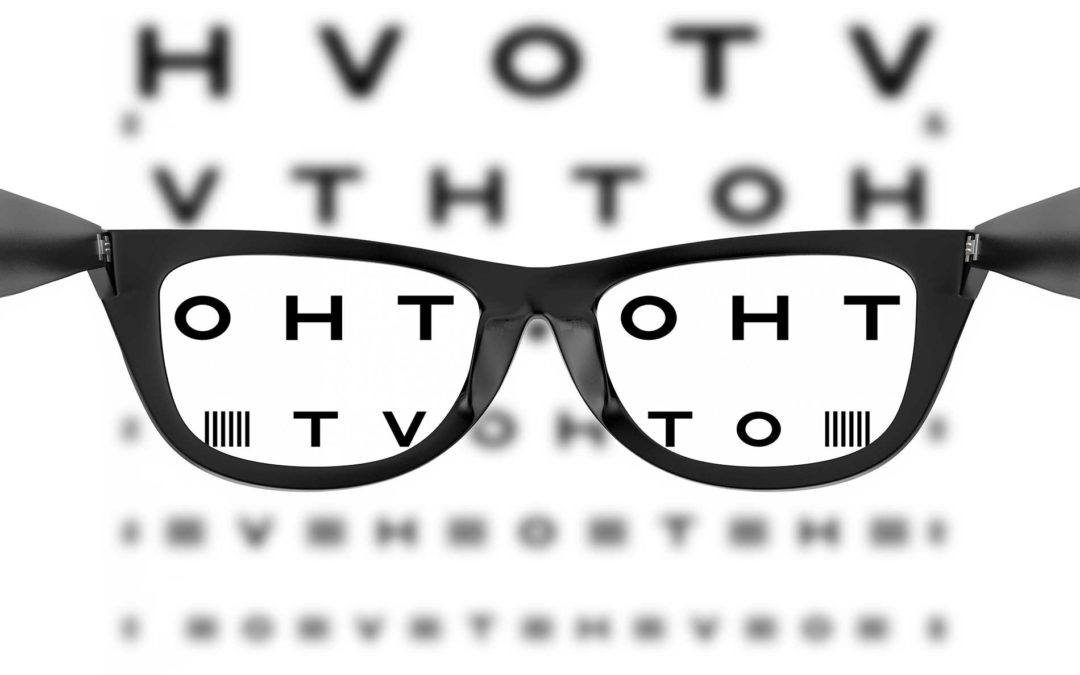If you’ve ever had an eye exam, you probably remember being asked to look at a chart full of rows of letters of different sizes and read the letters out loud. But why?
What does an eye chart measure?
Eye charts are used to measure how clearly you can see details at distance – your visual acuity. The person being tested is asked to identify a series of letters of various sizes. The smallest size letters that a person can consistently read correctly determines their visual acuity.
What kinds of eye charts are there?
The two most widely used eye charts are the Snellen chart and the Logmar chart. Both use a series of letters shown in rows of decreasing size to measure visual acuity:
- The Snellen chart was developed in 1862 by Herman Snellen
- The LogMAR chart was developed by the National Vision Research Institute of Australia in 1976.
How do eye chart tests work?
The eye chart is placed at a set distance away from the person. The person then removes any glasses or contact lenses. They are asked to cover up one eye and read the chart with the other eye, continuing until they can no longer make out the letters. Then they switch eyes and repeat the process. The optician records the results. Sometimes the person may also be asked to read the chart while wearing their glasses or contact lenses.
How have eye charts changed over time?
The Snellen Chart was the first official chart developed, but it and the LogMAR test couldn’t accurately measure visual acuity in infants, young children, or adults with trouble reading. Other tests using symbols or colors were developed to handle these situations. Both the Snellen and Logmar tests are still regularly used today.
How often should you take an eye chart test?
Eye charts are part of a standard eye exam. Adults under the age of 40 should have their eyes checked every five years. Adults age 40 to 54 should be tested every two to four years. Adults over 54 should have an exam every one to three years.

We’re here to help!
Regular eye testing is important. Early detection can often significantly prevent vision loss. Dr Specs Optical in Kelowna provides eye exams on site, so don’t wait! Book an eye exam appointment today by giving us a call!

